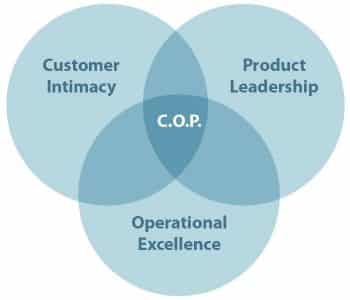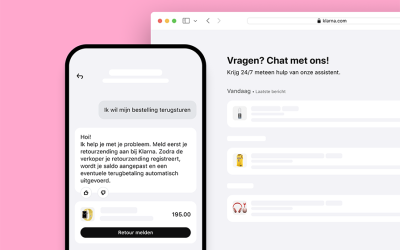Digitization changes view of Treacy and Wiersema value strategies
In a world of rapid change and lurking disruption, it is increasingly important for organizations to be able to stand out from the rest.
For decades, Treacy and Wiersema’s thinking has been one of the most important guiding principles for creating distinctiveness. But with the changing landscape and the rise of digitization, a new outlook is desirable for Treacy and Wiersema, says Dick Theisens, founder of Symbol. “Pursuing all three value strategies is the new normal.”
Every company has the same challenge: ‘How can we offer products and services with maximum value to our customers at the lowest possible cost and with the shortest delivery time?’ Michael Treacy and Fred Wiersema describe three generic value strategies in their book “The Discipline of Market Leaders”(1997): Operational Excellence, Customer Intimacy and Product Leadership.
Operational Excellence (Excellent Performance):
The Operational Excellence strategy focuses on an optimal delivery process based on customer expectation, without errors, on time and in a cost-effective manner. It is a philosophy, where problem solving, teamwork and leadership result in the continuous improvement of the production process. Managers in this area are often centralized, combined with strong organizational discipline and standardized, streamlined operations. The focus is on continuous improvement of operational processes. Examples of companies following this strategy include high-volume companies such as automotive and transactional organizations such as banks, insurers and Internet companies. They operate in a mature and commoditized market.

De Treacy and Wiersema value strategies for the future
Customer Intimacy (Customer Partnership):
The Customer Intimacy strategy focuses on offering a unique service or product in the marketplace. This requires personalization of the service provided and tailoring products to the specific needs of the customer. This strategy bundles services or products into a “solution” designed specifically for an individual customer. These types of companies usually have a decentralized organization. This enables them to change quickly. Development processes, operational processes and support processes must be very flexible. Examples of companies following this strategy include construction, IT development, retail, healthcare and recreation.
Product Leadership:
The Product Leadership strategy focuses on continuously providing superior products and services. A producer or organization offers something very special or the very best and therefore may charge a higher price. According to Treacy and Wiersema, the importance of following the latest trends is present. These organizations cannot afford to be left behind. Examples of companies following this strategy include manufacturers of exclusive cars, asset managers, hospital specialists, Google and many other Web companies.
According to Treacy and Wiersema, a company must excel in one of these three value strategies while performing at an acceptable level in the other two strategies. While many organizations do indeed focus on one strategy, there are also those that go further and have managed to excel in two value strategies.
While this model has been valid for decades to guide organizations in their long-term strategy, and while this model can still work for most traditional organizations, however, it is no longer sufficient for modern organizations in today’s digital world. The new stars at the forefront are companies such as Booking.com, Amazon.com, WhatsApp and Über. Facebook is now worth more than IBM, and Instagram has managed to gain $1 billion in value with just 8 employees.
These companies have proven that it is possible to apply each of the three strategies at a top level. They know how to meet individual customer needs (Customer Intimacy), they work incredibly efficiently (Operational Excellence) and they have been able to bring groundbreaking new products and services to market (Product Leadership). Therefore, the new value strategy to pursue in the coming decades is the combination of all three. In the figure, this is represented as “C.O.P.,” a combination of Customer Intimacy, Operational Excellence and Product Leadership.
Lean Six Sigma does not provide all the answers to achieve this, but the Lean Six Sigma Mindset, Skill set and Tool set do provide many guidelines and practical tools for this strategy.
Dick Theisens is active in the field of process optimization: Six Sigma, Lean Manufacturing. Symbol analyzes existing processes, tracks down improvements, and trains and coaches client employees to actually implement them.
Latest news/blogs
Klarna saved 40 million with AI but lost the trust of its customers
Klarna saved40million with AI but lost the trust of its customersThe question sounds absurd: how...
How do you eat an elephant?
Dutch productivity is falling again - and that offers precisely opportunitiesLabor productivity in...
From Theory to Practice: Junior Consultant at Stoneridge
From theory to practice: Junior Consultant at Stoneridge Before working at Symbol, Junior...


